Greek theatre visual resources
1/66
There's no tags or description
Looks like no tags are added yet.
Name | Mastery | Learn | Test | Matching | Spaced |
|---|
No study sessions yet.
67 Terms
where is the Theatre of Dionysus
On the South-Eastern side of the Acropolis, above a sanctuary dedicated to Athena
when was the theatre of Dionysus built
it was built in the second-half of the sixth century BC
what’s the Theatre of Dionysus sometimes known as and why
the Lycurgan theatre, because the leading Athenian statesmen, Lycurgus, rebuilt the theatre in stone (it used to be made from wood) in 342-326 BC
During Roman control, how was the Theatre of Dionysus changed
the size of the Orchestra was decreased while the stage and seating increased
where is the Theatre of Thorikos located and when was it used from
in Thorikos, a village on the south-east coast of Attica, used from the late 6th century BC
what are some feature of the Theatre of Thorikos
it has a capacity of 3,000, it has an oval shape with curved corners for acoustics, there’s a temple/ altar at each end of the performance area, and the seats were inscribed with honours, showing the most important got the best seats
what are some features of the theatre of dionysus
it’s more circular in shape, it had a capacity of 17000, it was on the south-side so protected by wind, andit had an altar to dionysus in the orchestra, showing its popularity
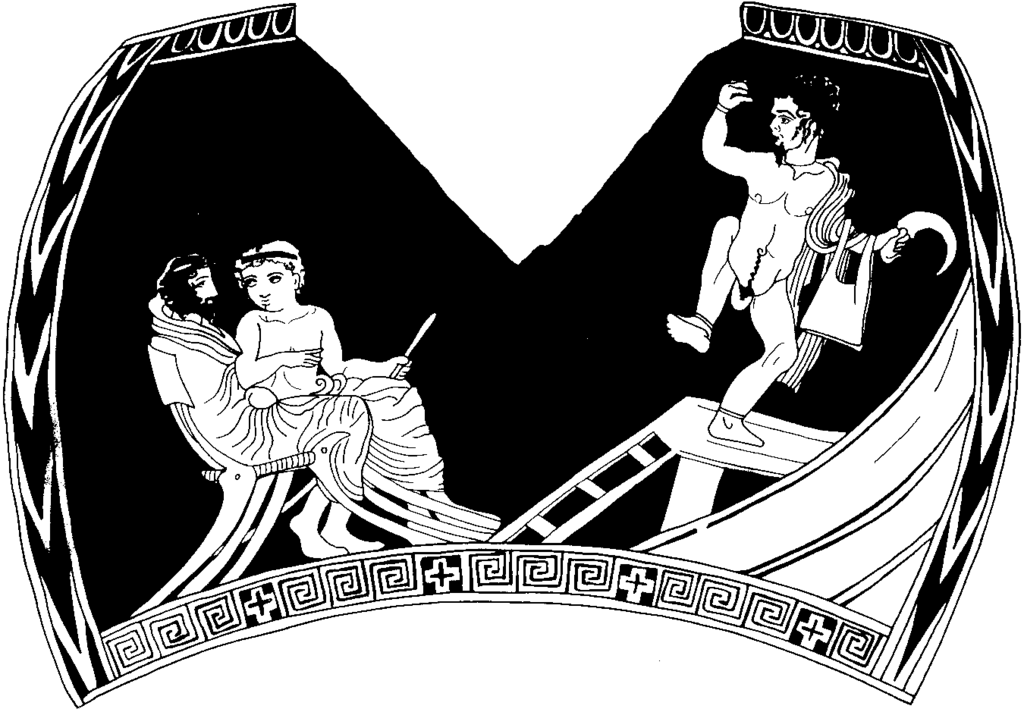
what’s this
an attic red-figure chorus vase called the Perseus dance vase, c. 420 BCE and the artist is unknown
what is an attic red-figure chorus vase used for
it’s a wine jug
what’s unique about the Perseus dance vase
it’s the only attic vase to show a stage and the only ancient greek painting to show a theatre audience
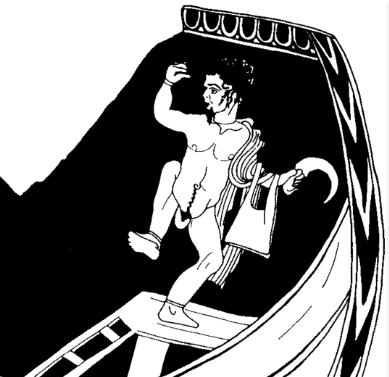
who is this man and what is he holding
that’s Perseus and he’s holding the a sword that looks like a sickle, which he uses to cut Medusa’s head off
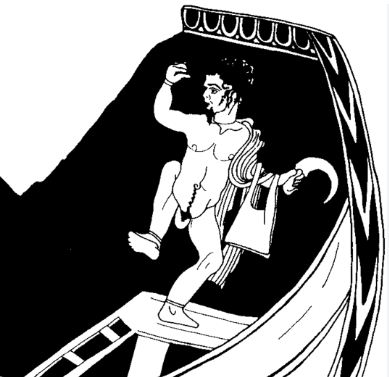
what is Perseus doing
he’s dancing or pretending to fly/
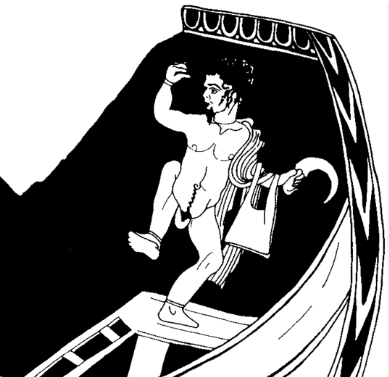
what can be said about Perseus’s costume
there are lines around his legs and arms indicating he’s wearing a flesh-coloured body suit and we can see he’s wearing a phallus, showing it might be a comedy
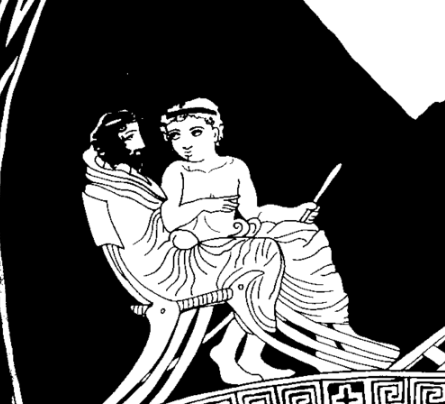
what can we say about the audience
it may be two men, as one is bare-chested, something women in greece would not be allowed to do, suggesting that only men were allowed to watch theatre

where are these two people sitting
the Prohedria (front row), showing they are people of importance.
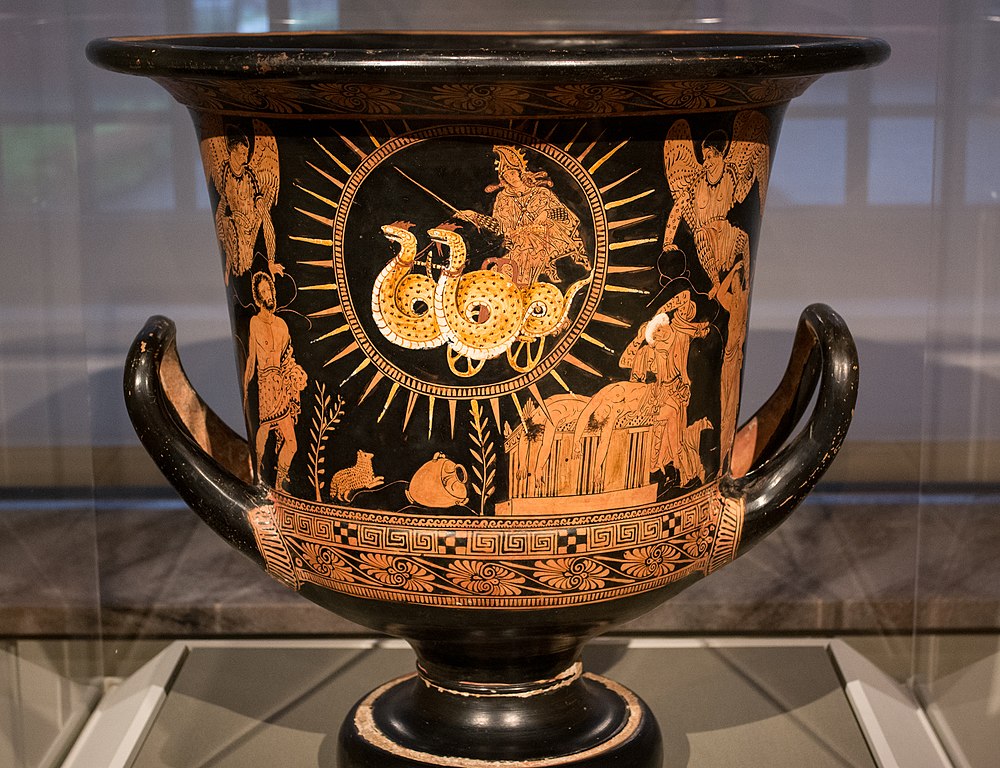
what is this type of vase called
a calyx krater called Medea’s escape, c. 400 BC and made by the Policoro painter
what are calyx krater’s used as
mixing-bowls

what’s unique about Medea’s escape
it shows the use of the crone and wheel platform
what does Medea’s escape tell us about vases
that we cannot always trust vases to accurately portray the Athenian stage. This is because unlike the play, the vase presents dragons and furies, and we see Medea’s sons have been left behind. In the play, Medea takes her sons so Jason cannot bury them, but could’ve shown another version of the story
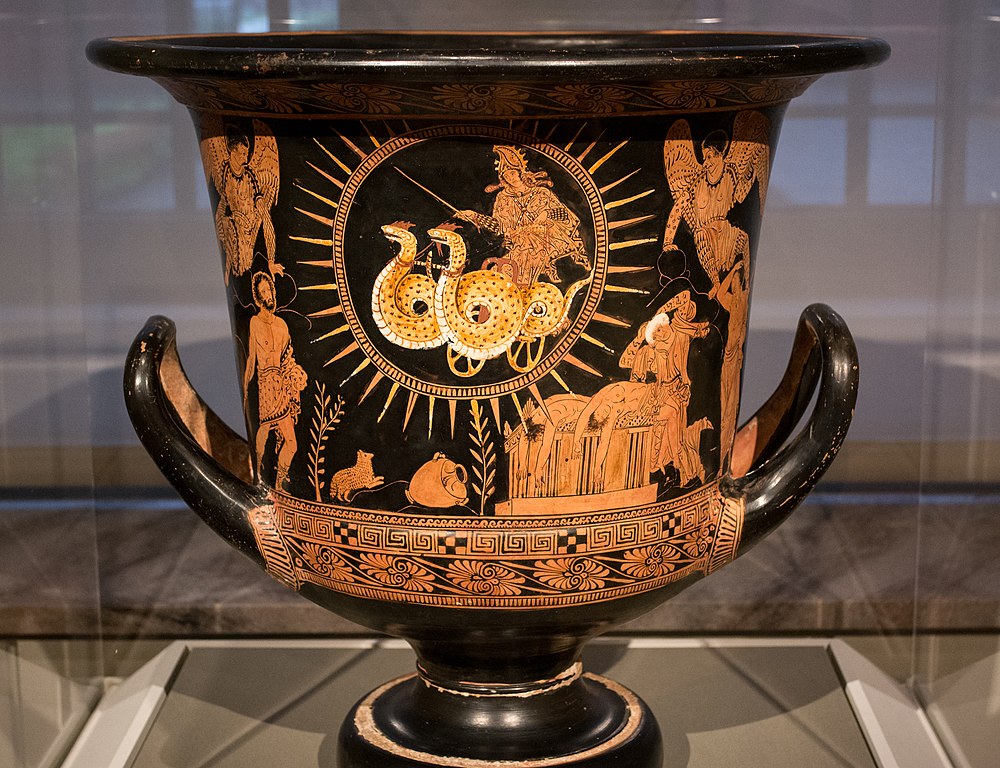
why is there a sun in the background?
it helps people identify who the person is, as Medea was Helios’ (god of the son) granddaughter
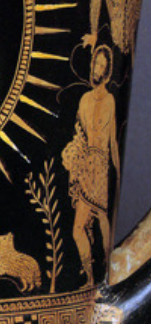
who is this man and what is he wearing
That’s Jason, wearing animal skin, in a more traditional heroic style. However, this is unusual for a tragic play where actors wore long-sleeves and detailed chitons
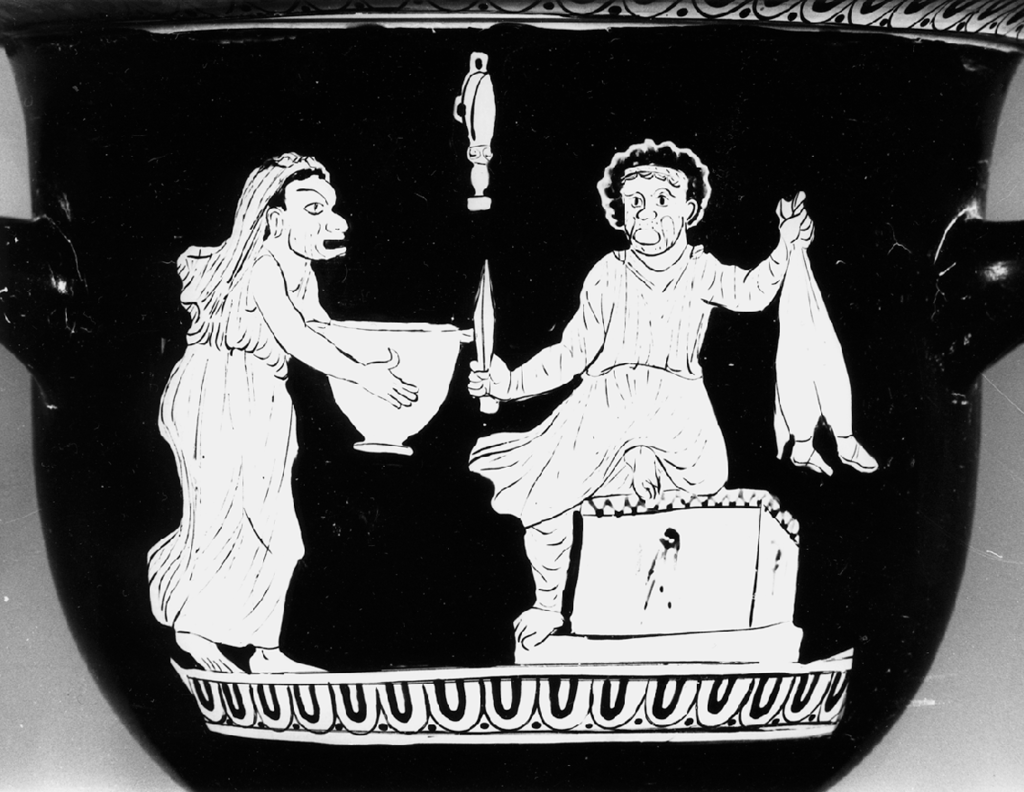
what’s this
a red-figure bell krater, called the Wurzburg Telephus vase, c. 380-370 BC and was made by the Schiller painter
what does the Wurzburg Telephus vase show
a scene from one of Aristophanes’ comedies, Woman at the Thesmophoria
where does the Wurzburg Telephus vase get its name
the scene is a parody of Telephus by Euripides, a lost tragedy
where is the scene shown on the Wurzburg vase set
at the all-women festival in which women spent 3 days getting drunk
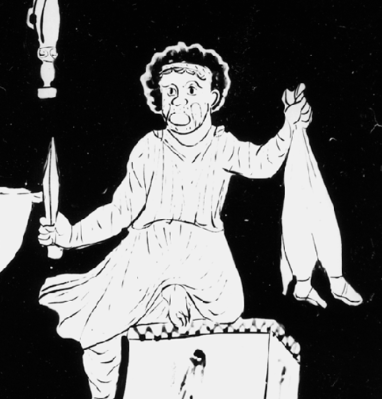
what’s interesting about the man?
he’s shown as clean-shaven, whereas most male figures on south italian vases were shown as bearded

what aspect of comedy does the vase show
physical comedy

what is the man holding and why is the woman running to it
he’s holding wine skin, and the woman doesn’t want to lose any wine
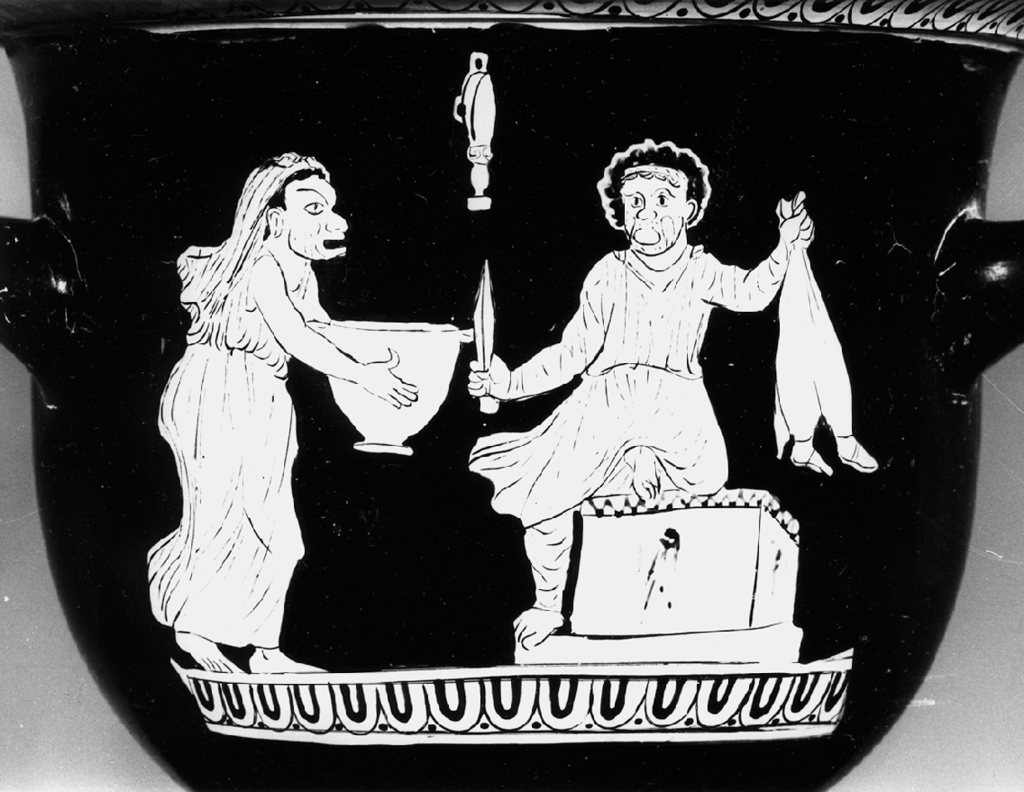
what does this image tell us about comedy compared to tragedy
that unlike tragedy, comedy used props (four are shown here)
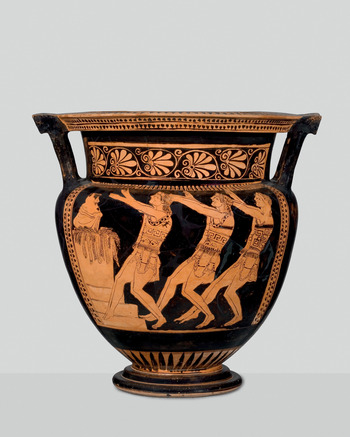
what’s this
it’s a red-figure column krater called the basel dancers vase, the painter is unknown but has mannerist style
when was the basel dancer’s vase made
in 500-490 BCE, so tragedy was still a new art-form
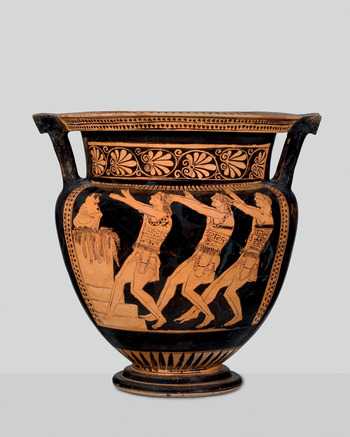
what does the vase depict
a tragic chorus in action in front of a stepped alter
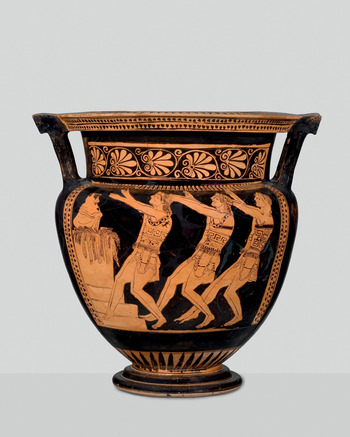
what do the faces of the chorus tell us
we can tell they’re wearing masks due to their gaping mouths
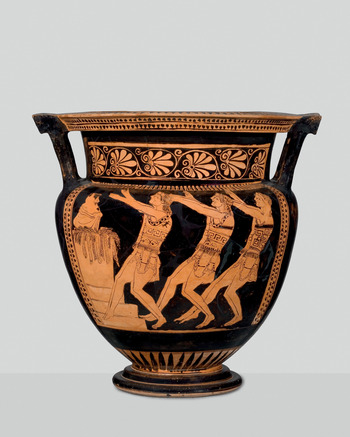
how do we know the vase depicts a chorus not actors
because they are bare foot
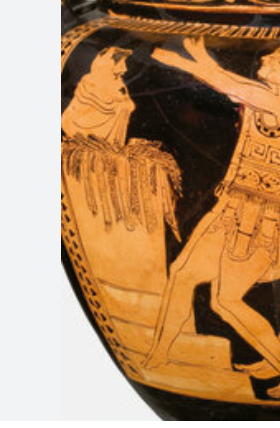
what’s going on here
it’s a tomb or alter of some kind, and the person may be a ghost or a statue of Dionysus
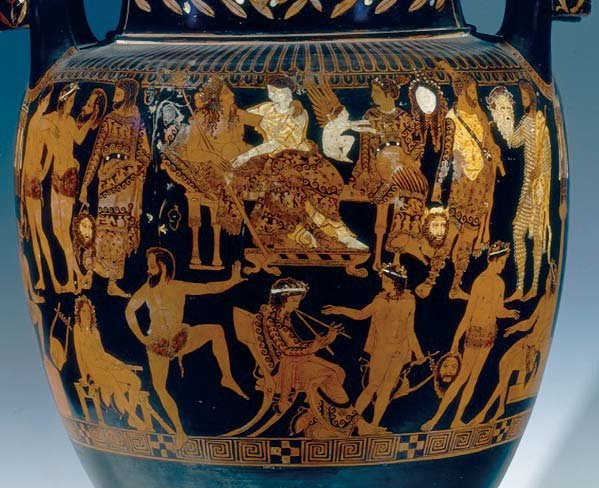
what’s this
a volute krater (a mixing-bowl) called the Pronomos vase, c. 410 BC, and made y the Pronomos painter
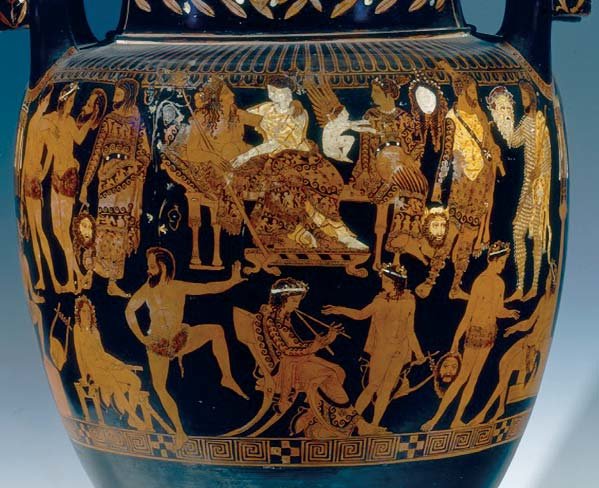
what does this vase show
actors preparing for a satyr-play
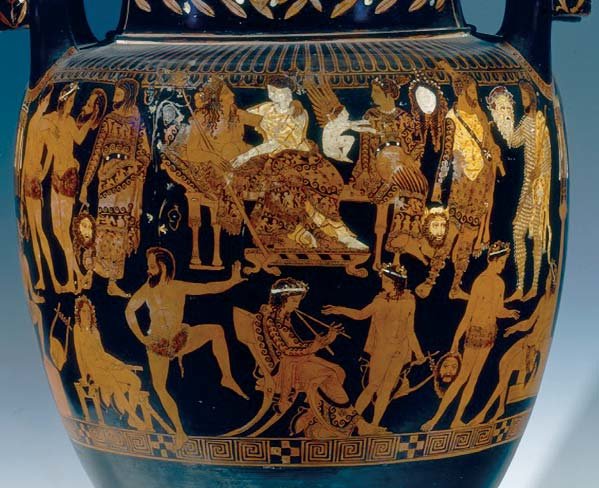
what does this vase help us understand
the types of masks and costumes used in Athens. we can see the masks are quite plain while the costumes are greatly decorated with patterns or animals or people
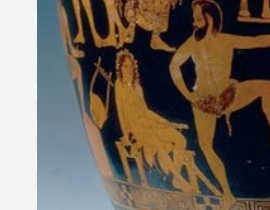
what role might the person sitting have
they might be a playwright as they’re holding a scroll (possibly a script)
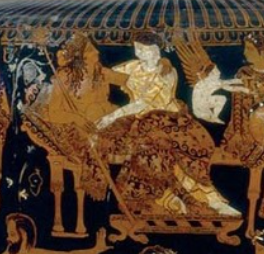
who are these two meant to be
Dionysus and Adrianne
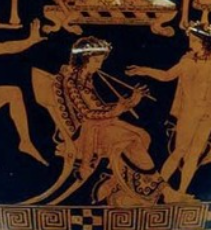
whose this
Pronomos, one of the most famous musicians the last 5th century

what is the name of this vase
Pelike by Phiale, made in 450 BC and shows tragic actors dressing
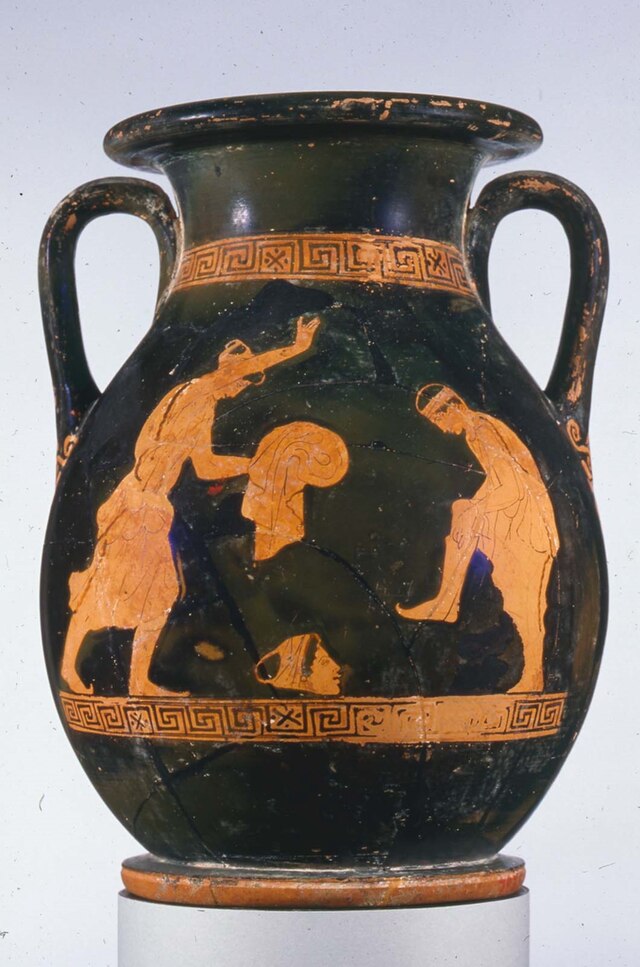
how do we know the vase depicts actors
they’re wearing long chitons. Chorus members would need to be wearing something they can move quickly in
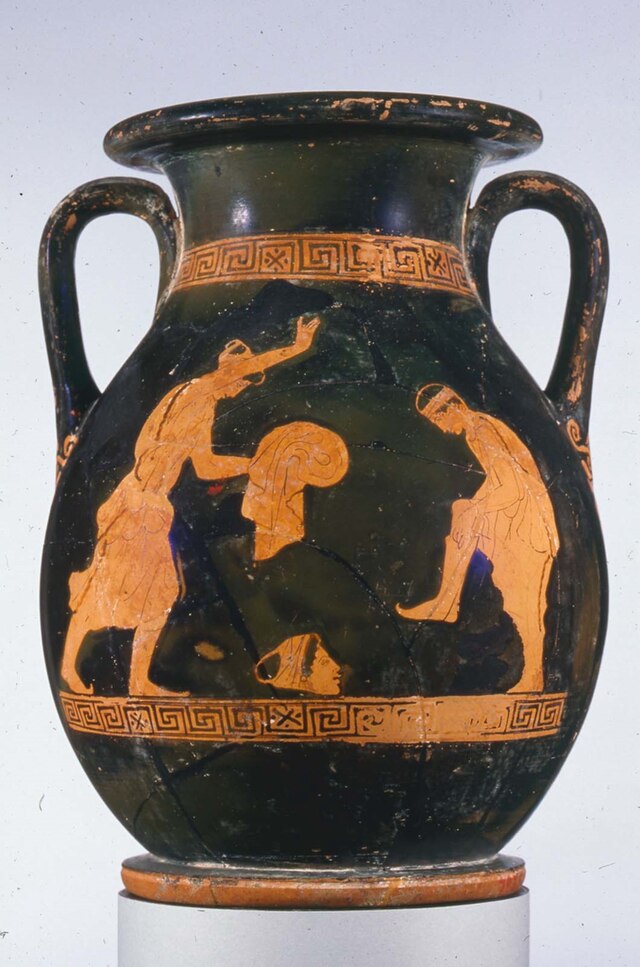
what’s in the middle of the actors and what is the one on the right doing
an actor’s mask is in the middle and the person on the right is putting on some boots

what’s this
a red-figure bell krater called the Cheiron vase, c. 370 BC and made by the McDaniel painter

what type of scene is being shown
It’s a scene from a comedy as seen by Xanthius’ short tunic and very visible phallus, as well as his full stomach and exaggerated features. Lots of slapstick comedy

who is the character with white hair
Cheiron, with his shaggier eyebrows, staff to walk, and another actor to play his behind
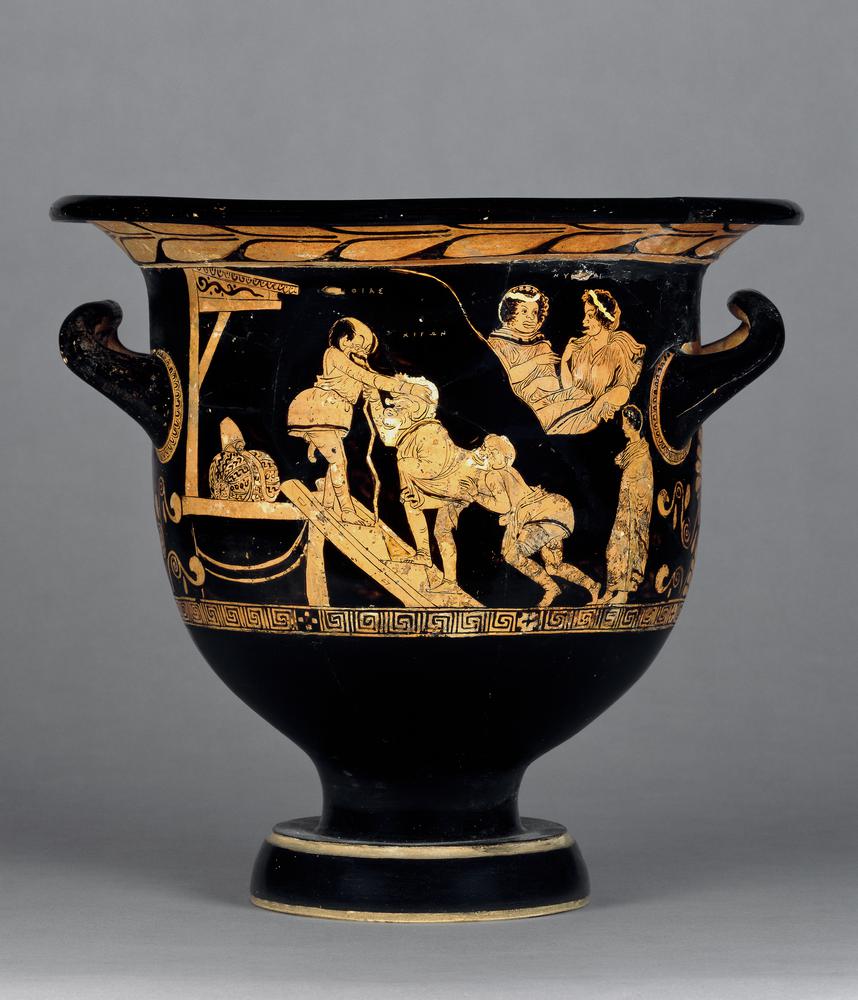
what play is being shown
thought to be a parody of a myth where Cheiron is needed by Apollo, which we can see as the pattern of the banister is one found in Delphi

who might be behind Cheiron
Achilles, who was a student of Cheiron
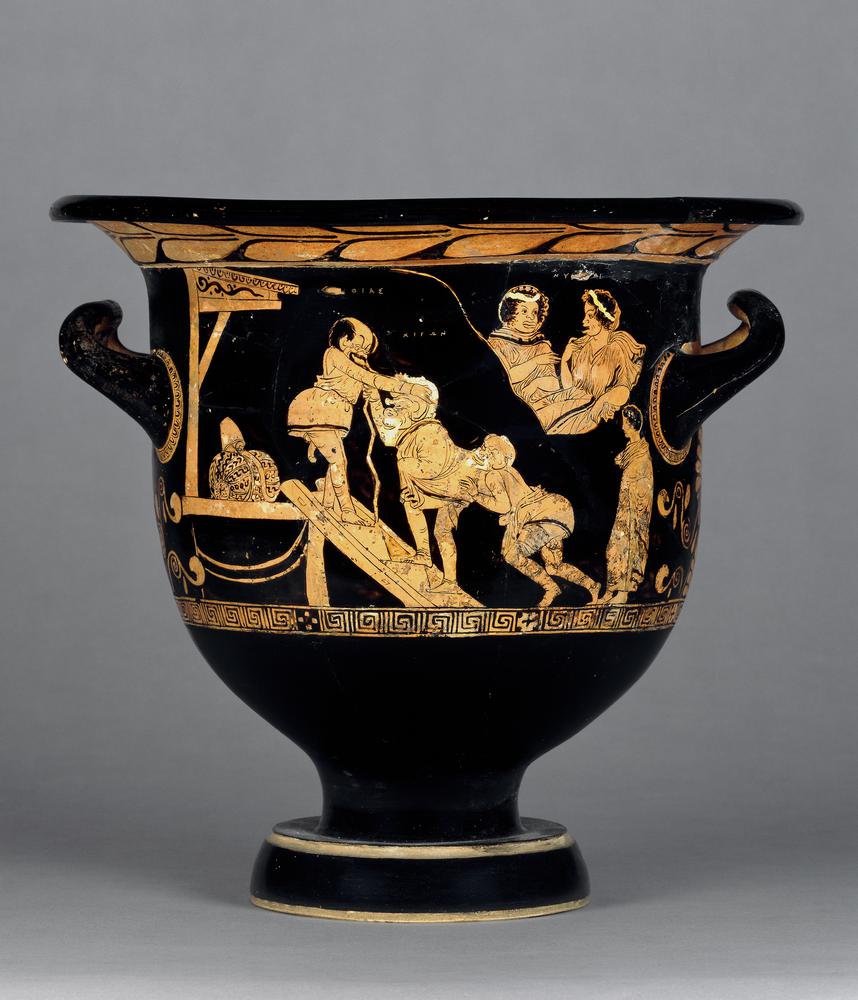
who are the people in the background
Nymphs, perhaps there to show how Cheiron bathed in a stream sacred to nymphs

what vase is this
it’s a fragment of a calyx krater, called Jocasta and Oedipus the king, c. 330 BC, made by the Capodarso painter
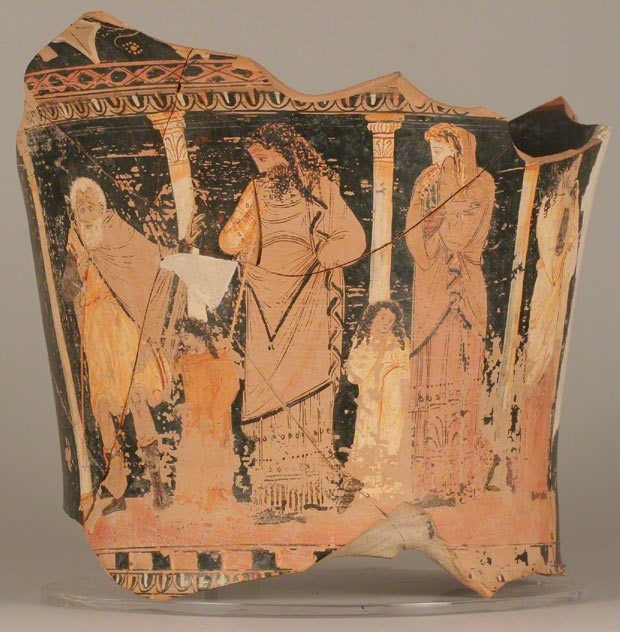
what’s being shown
When Jocasta realises while Oedipus is still unaware, and their daughters are present
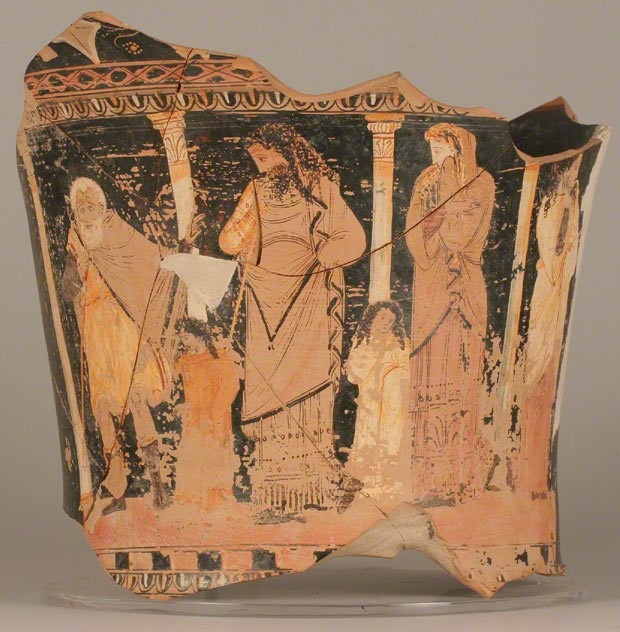
how do we know that Jocasta has realised
her hands are at her face, indicating grief and worry
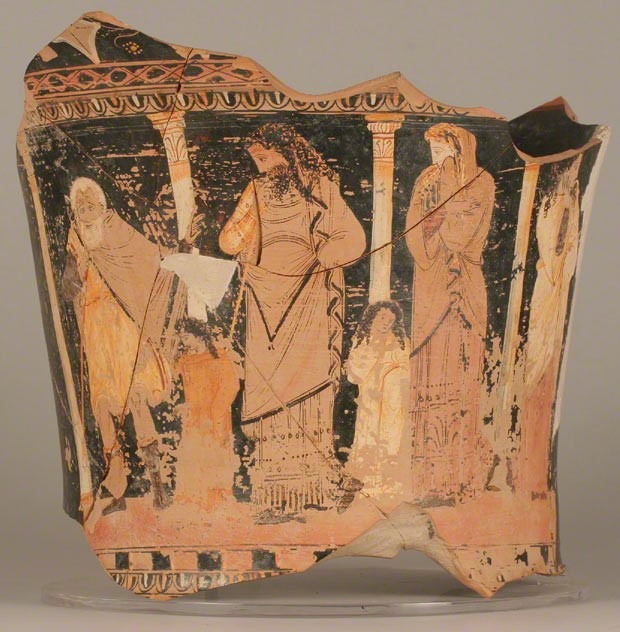
how do we know how Oedipus is feeling
we know he’s puzzled as he’s stroking his beard
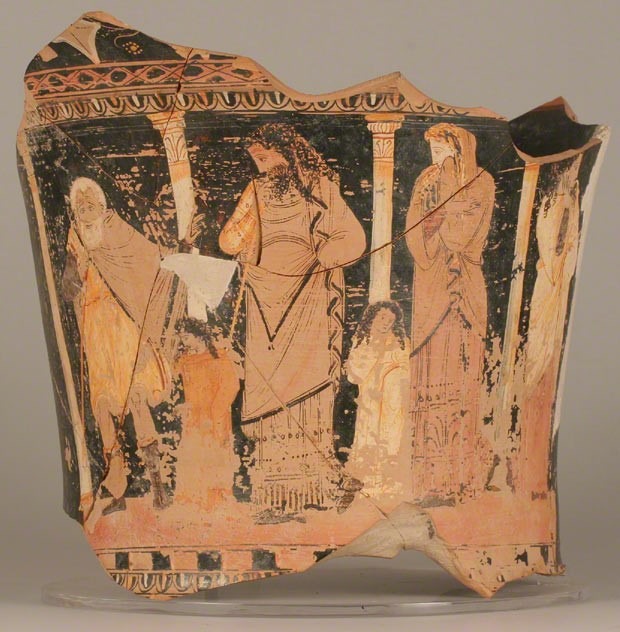
How do we know this is a play
there skene is in the background, as well as the position of the characters
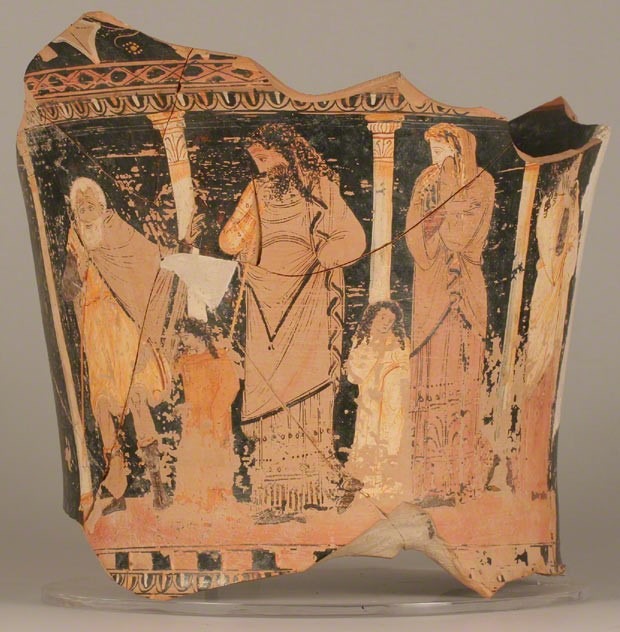
who is next to Oedipus
a messenger, who answers Oedipus’ questions

what’s this
a red figure stamnos, named Maenead stamnos, made in the late 5th century and made by the Dinos painter
what are stamnos’ used for
as a wine vessel
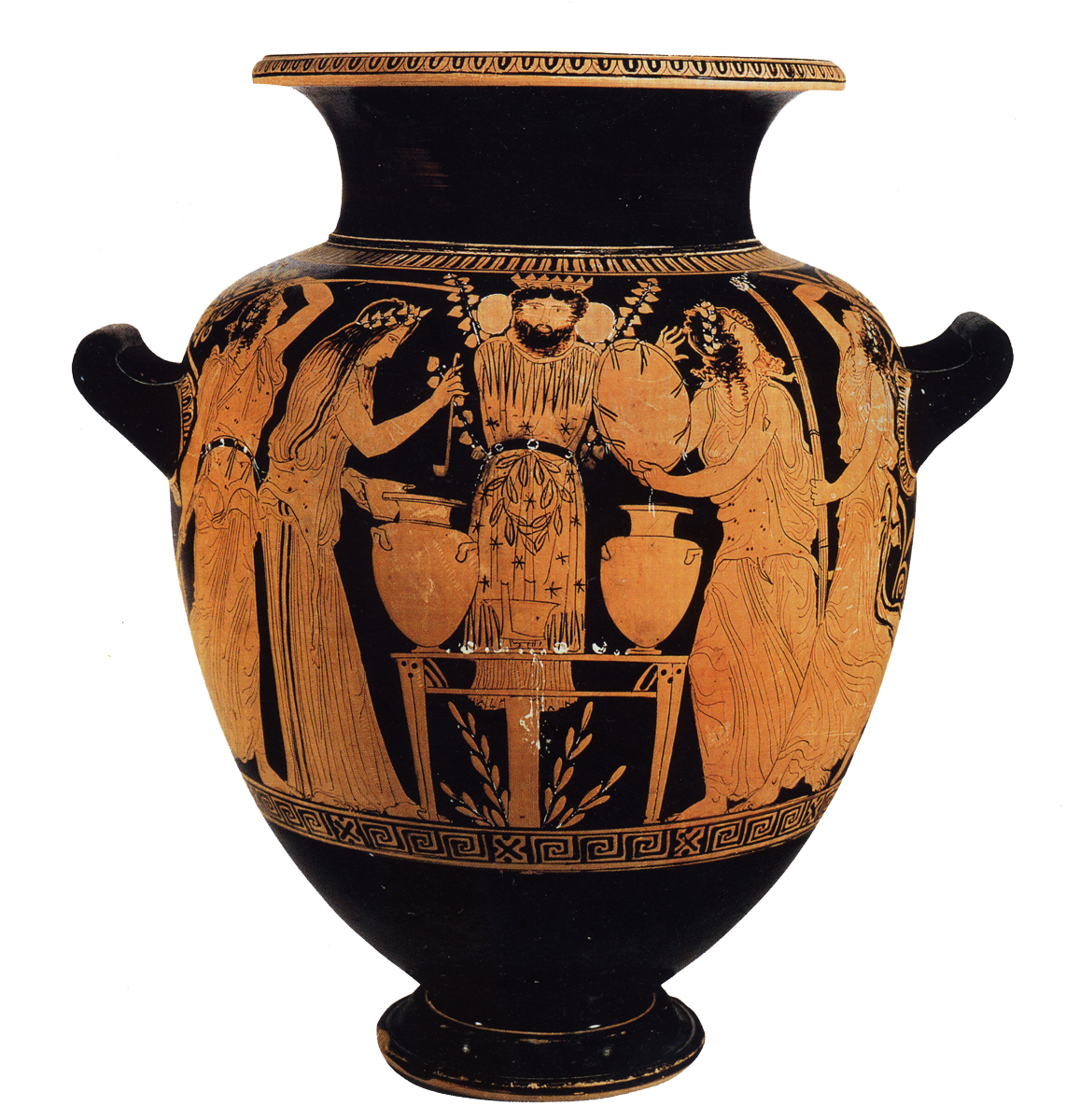
what is being shown
a Dionysiac ritual
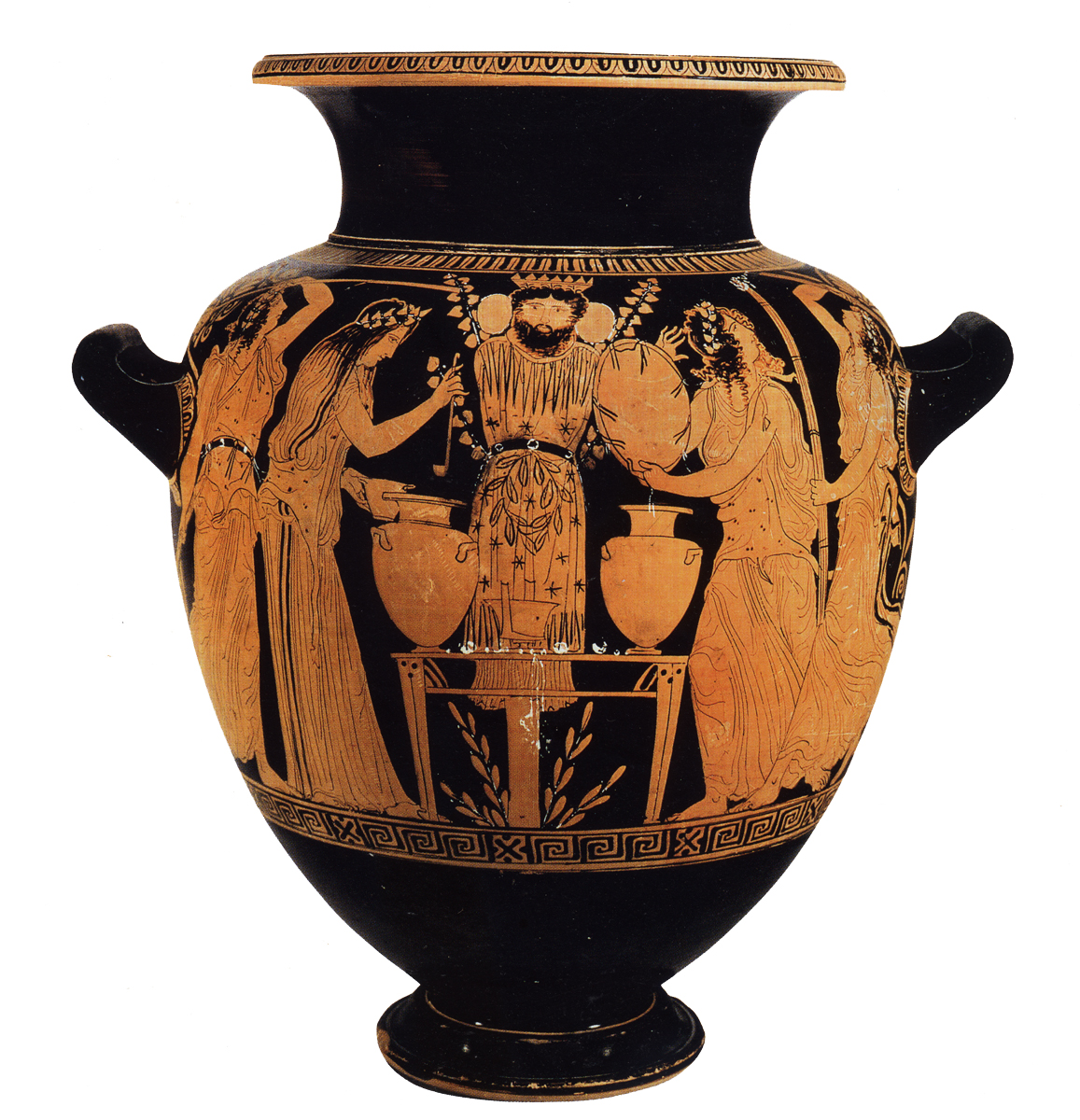
what are the women doing
dancing around a statue of Dionysus, one plays a thyrus, while another plays the tambourine and another pours whine
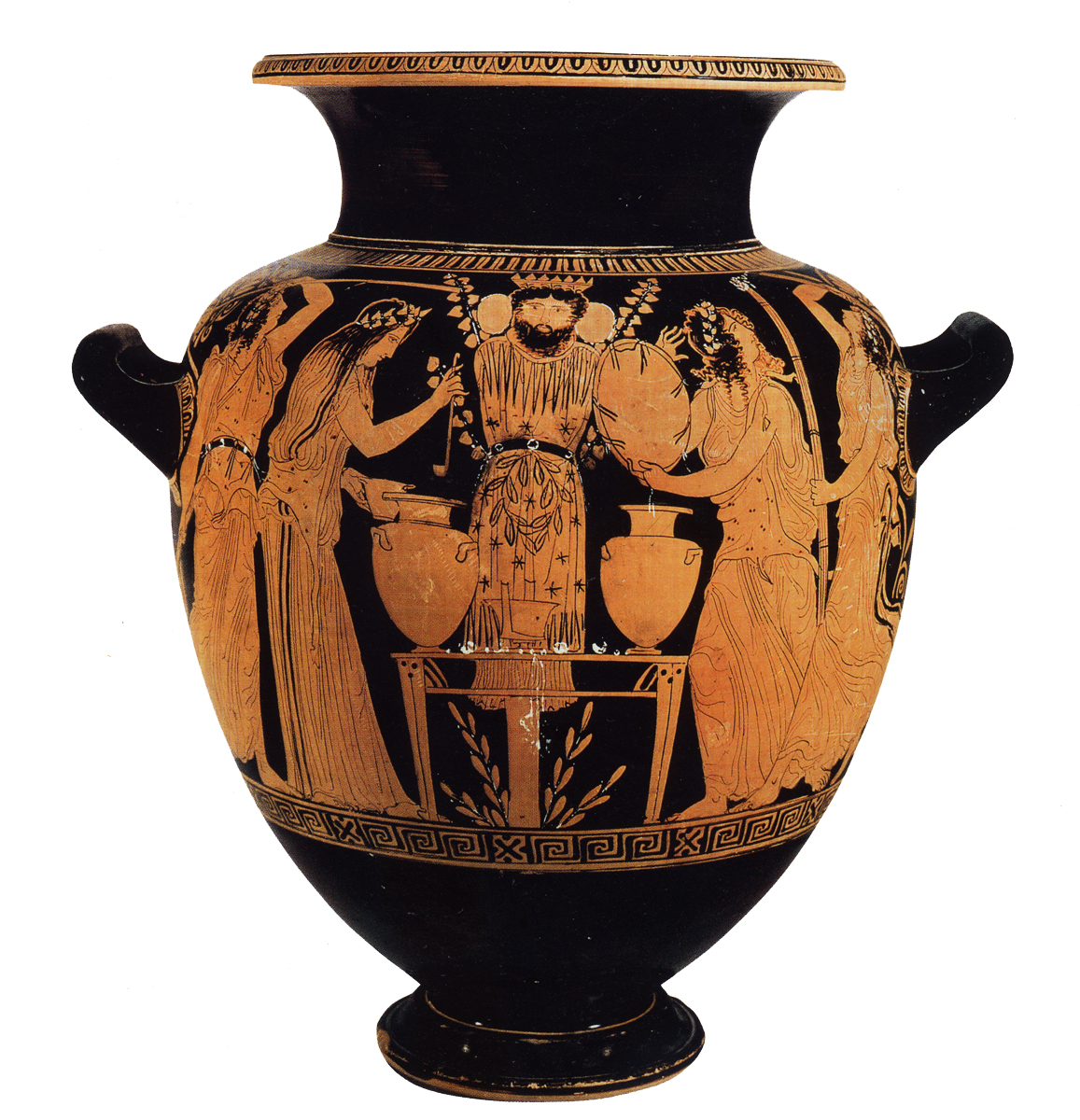
how might we know that the statue is of Dionysus
The two stamnoi is a key as he was the god of wine
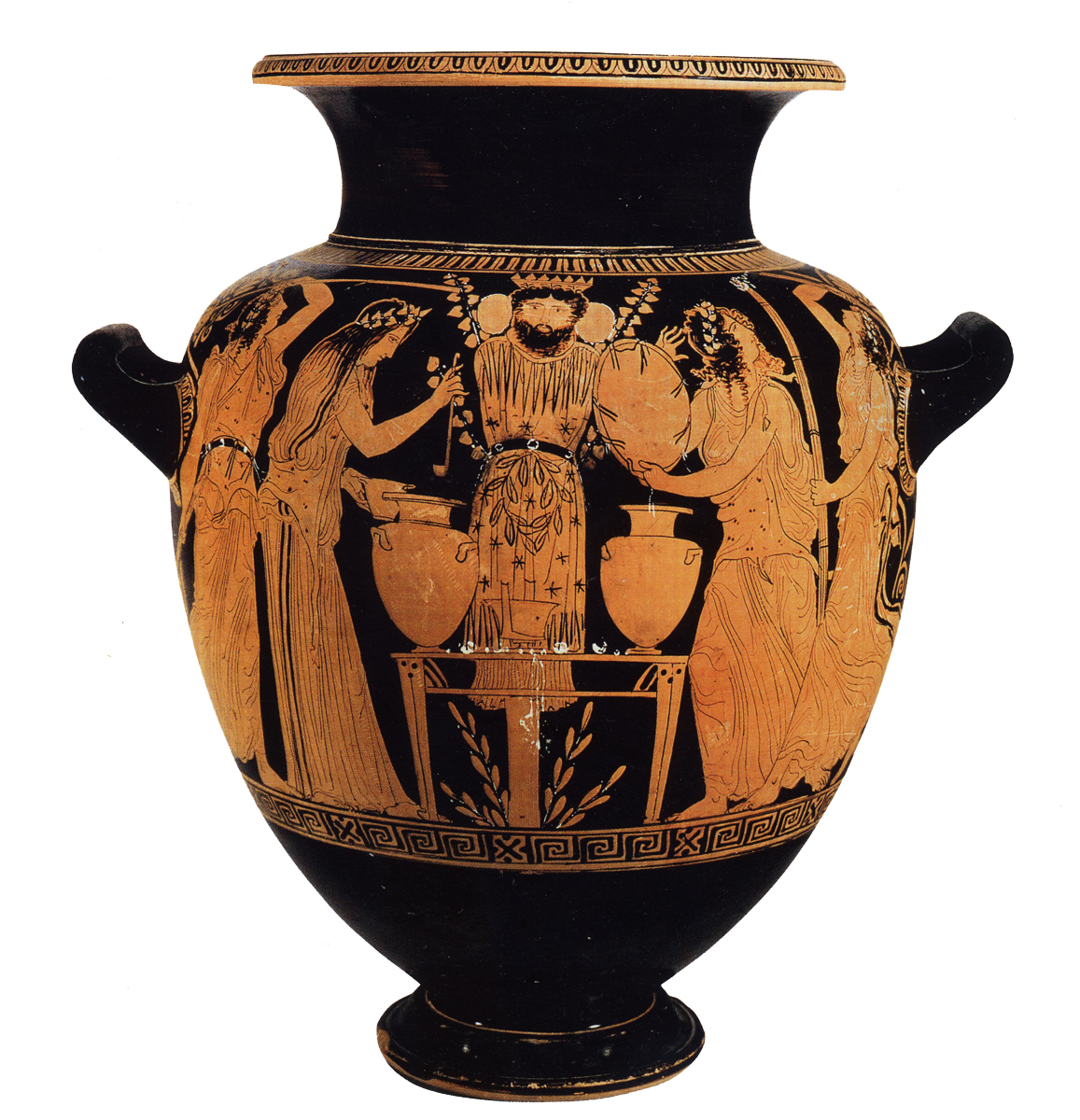
what can we tell about the women’s hair
it’s tight and flowy, showing they’re letting go, this would be against societal expectations

what is this
a red-figure kylix (drinking cup), called the death of pentheus, c. 480 BC and attributed to Douris

what’s interesting about this vase
this adaptation of Pentheus’ death long predates Euripides, shows he was one of many that was inspired by this myth
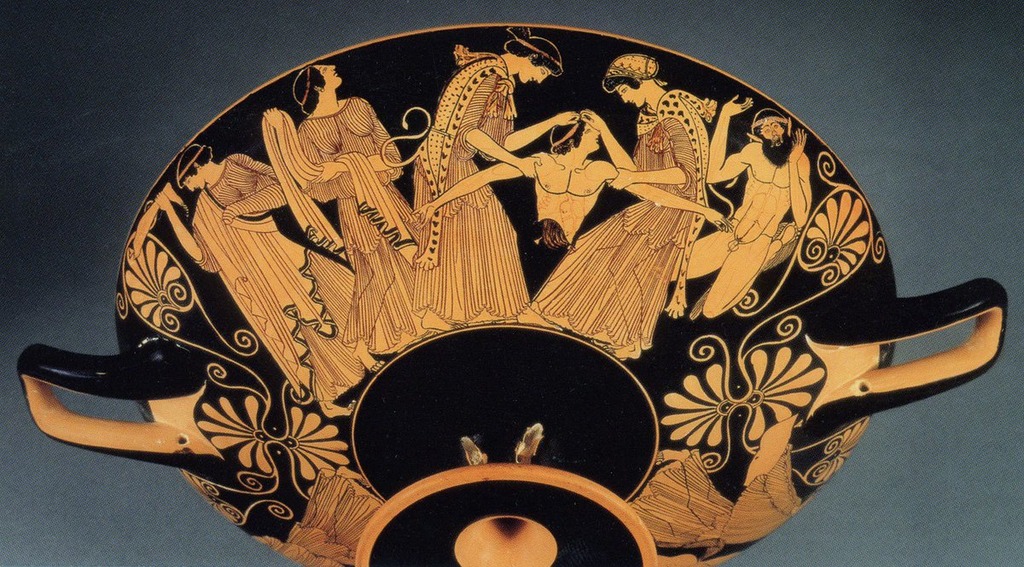
who or what is in the background
a satyr, it’s overseeing the event, perhaps as a reminder that this is happening under Dionysus’ watch, this is emphasised by the panther skin

who do historians believe this to be
Agave, as she’s doing something different, holding cloth
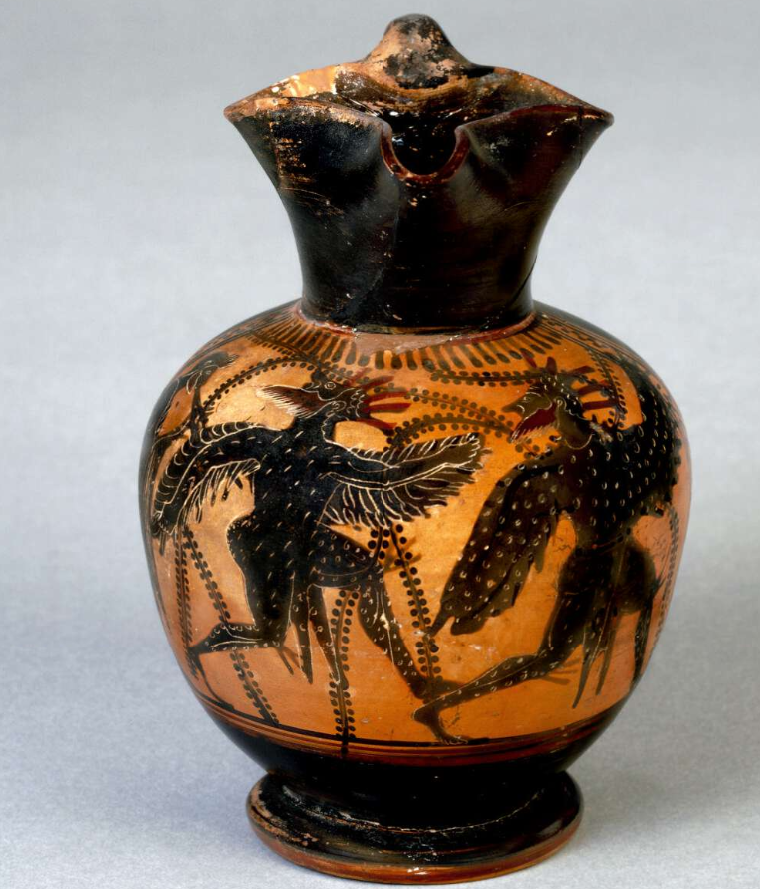
what’s being shown
a black-figure chous depicting two chorus-members dressed as birds, c.480 BC, attributed to the Gela painter